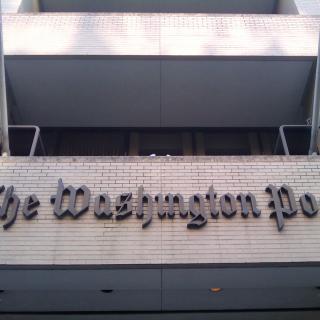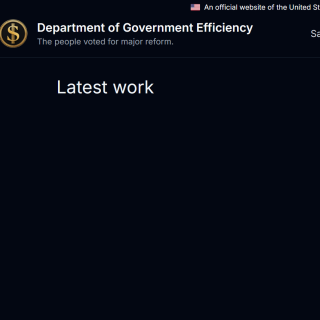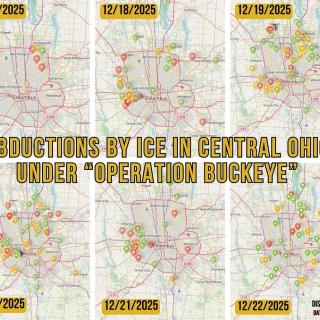Let me first stipulate that I’m not an attorney, but I have an opinion. I didn’t know that you had to be one in order to have one. My opinion concerns the recent guidance issued by the U.S. Department of Justice (DOJ) with regard to marijuana enforcement under the Controlled Substances Act (CSA). Call mine an educated opinion. Let the Letters to the Editor debate me.
On August 29, 2013, James M. Cole, the Deputy Attorney General at the DOJ issued a memo to all United States Attorneys entitled, “Guidance Regarding Marijuana Enforcement.” This is the same James M. Cole who issued similar guidance in June 29, 2011, updating guidance that was issued by Deputy Attorney General David W. Ogden on October 19, 2009.
In those memos, the DOJ seems intent on clarifying its clarifications. The most recent memo claimed that the agency has focused its efforts on these enforcement priorities, among others:
- Preventing the distribution of marijuana to minors;
- Preventing revenue from the sale of marijuana going to criminal enterprises, gangs and cartels;
- Preventing the diversion of marijuana to states where it is legal under state law in some form to other states;
- Preventing the state-authorized marijuana activity from being used as a cover or pretext for the trafficking of other illegal drugs or other illegal activity;
- Preventing violence and the use of firearms in the cultivation and distribution of marijuana;
- Preventing drugged driving and the exacerbation of other adverse health consequences associated with marijuana use;
- Preventing the growing of marijuana on public lands and the attendant public safety and environmental dangers posed by marijuana production on public lands; and
- Preventing marijuana production and use on federal property.
Regardless of the memo, the DOJ reiterates that “Congress has determined that marijuana is a dangerous drug and that the illegal distribution and sale of marijuana is a serious crime.” This is the basis of marijuana’s placement in the most restrictive Schedule 1 of the CSA. The DOJ goes on to state that it is committed to enforcing the CSA in all States, while at the same time making efficient use of its limited investigative and prosecutorial resources. The DOJ indicated that when any of the above priorities were evident – they’re mostly the same, memo to memo – the conduct would not be in compliance with applicable state law, thereby triggering federal interest, possibly intervention. When instructing federal prosecutors to weigh all available information and evidence to determine if a target is in compliance with a state regulatory system, the DOJ essentially has these attorneys “practicing” state law, not federal law which they are instead charged with enforcing.
Let’s be clear as to what marijuana is: whether medical, industrial, therapeutic or recreational, the plant belongs to only one species, Cannabis sativa L. Essentially, it is one plant with many uses. Thus, by extension the memo applies to marijuana whether it is smoked to get high, worn as clothes or refined to fuel your car.
After one third of the states had legalized medical marijuana and passed pro-hemp legislation, one might have thought that the feds would get the message and permit new industries to emerge which would provide not only medicine, but badly needed jobs and economic growth where both had since gone stagnant due to a lingering recession. Waving fields of hemp might align I-77 north to Toledo or south on Rt. 23 south to Circleville.
But, no. Despite the clarified clarifications, according to Americans for Safe Access:
- The DEA has conducted 270 raids on medical cannabis providers during the Obama Administration
- The Obama Administration has spent nearly $300 million on enforcement efforts in medical marijuana states
- In 2011 and 2012, under the Obama Administration, DEA spent 4 percent of its budget on medical cannabis cases.
In addition, the DOJ seized $2.9 billion of forfeited assets in 2010 and 2011 alone, with much of this cash flow attributable to the war on marijuana. That certainly helps pad the $3.7 billion federal drug interdiction budget and protect 113,543 DOJ jobs.
Even as the DOJ suggests that a “robust system” with a “tightly regulated market in which all revenues are tracked and accounted for” which may constitute a get-out-of-jail-free card, the devil is in the details. Consider the farm bill recently passed by the U.S. House of Representatives that would permit growing hemp at universities for academic and research purposes. Remembering that hemp is but one plant, with many uses, the memos clearly state that “Marijuana is and remains illegal under federal law” and that the DOJ will continue to enforce that way by “Preventing the diversion of marijuana from states where it is legal under state law in some form to other states.” Therefore, those waving fields are not possible so long as Cannabis is Schedule 1, since the plant product cannot cross state lines to enter a $500 plus million global market. Further, the Justice Department is intent on “Preventing the growing of marijuana on public lands.” Isn’t The Ohio State University a public institution on “public land?”
This same logic applies to medical marijuana. Distribution to minors? What about six-year old Charlotte Figi featured so poignantly in the recent CNN special that changed Dr. Sanjay Gupta’s mind concerning the medicinal use of the plant?
For me, these clarified memos clarified very little. A reading of the last paragraph in the most recent Cole memo shows that the DOJ has given itself enough wiggle room to continue its enforcement of the profitable – for them – war against marijuana. So what are the incentives to do anything differently in memo #3 versus memos #1 and #2? It seems like business as usual at the DOJ, in my non-legal opinion.



